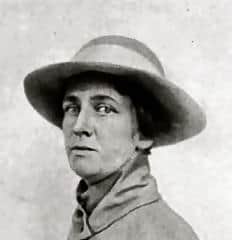American journalist Herbert Adams Gibbons coined the phrase “The Blackest Page of Modern History” in reference to the Armenian Genocide.
Gibbons was born in Annapolis, Maryland, on April 8, 1880. He attended the William Penn Charter School and the University of Pennsylvania in Philadelphia. He earned an M.A. degree from Princeton University in 1907 and a Bachelor of Divinity degree from Princeton Theological Seminary the following year. He earned a Ph.D. degree from Princeton in 1913.
From 1908-1918 Gibbons was a correspondent for The New York Herald, filing dispatches from the Ottoman Empire, Egypt, the Balkans, and France. In 1909, as a missionary for the American Board of Foreign Missions, Gibbons and his wife, Helen Davenport Gibbons, whom he had married the year before, witnessed the massacre of Armenians at Adana and Tarsus. While working on his doctoral dissertation, from 1910 to 1913 Gibbons served as professor of History and Political Economy at Robert College (now Boğaziçi University) in Constantinople.
In 1916 Gibbons published The Foundation of the Ottoman Empire, which was followed by The Blackest Page of Modern History: Events in Armenia in 1915, where he described the massacres and deportations of the genocide. He stated in his foreword:
“It is because the Armenian massacres in Turkey are clearly established, because responsibilities can be definitely fixed, and because an appeal to humanity can be made on behalf of the remnant of the Armenian race in the Ottoman Empire without the slightest suspicion of political interest, that I feel it advisable and imperative at this moment to call attention to what is undoubtedly the blackest page in modern history, to set forth the facts, and to point out the responsibilities.”
The following year, his wife Helen published The Red Rugs of Tarsus: A Woman’s Record of the Armenian Massacre of 1909, writing in her preface that the genocide had brought back again her memories from 1909 during “that night in Tarsus, when we—seven defenseless women, our one foreign man a brave young Swiss teacher of French, and 4,800 Armenians waited our turn at the hands of the Kurds.”
In 1917-1918 Gibbons served with the American Expeditionary Forces in France and wrote the book Songs from the Trenches: The Soul of the A.E.F. (1918). He was staff correspondent for Century Magazine between 1918 and 1921, and for the next decade he was correspondent for various American publications, including the Christian Science Monitor, sending dispatches from Europe, Asia, and Africa. He reported on the Greek massacres by the Kemalists in Asia Minor in a series of articles for the monitor between May and July 1922.
Shortly after World War I, Gibbons became a professor in the History Department at his alma mater, Princeton, and was also Honorary Associate Professor at the Army War College (Washington, D.C.), where he also gave an annual series of lectures during the 1920s. He authored about 30 books about international politics and European colonialism, especially referring to the shifting borders of his time. In 1930 The New York Times named him as its special correspondent in China and Manchuria, The next year, as part of a world tour, Gibbons was the first person to cross Africa by rail from the Indian Ocean to the Atlantic. He made the complete trip (3,500 miles) in nine days.
He died on August 7, 1934, in Grundslee, Austria, at the age of 54. His wife Helen passed away in 1960.

